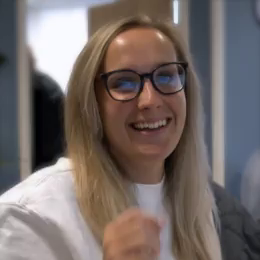First aid help at the touch of a button…
Posted 6 years ago

To some, technology is a massive part of their lives, something which brings them joy. To others, technology can be seen as a massive hindrance or an invasion of privacy. But what about technology that can save your life?
The number of deaths caused by heart and circulatory diseases in under 65s is also increasing, peaking at 18,668 in 2017, up from 17,982 five years earlier.
If someone is unresponsive and not breathing, that’s when CPR and, if one’s available, an AED might be required.
CPR should only be used if someone is:
– unconscious and not breathing
– unconscious and not breathing normally.
CPR, or Cardiopulmonary Resuscitation, is required when the heart or lungs aren’t working properly as it helps pump blood and oxygen around the body, by a combination of chest compressions and rescue breaths.
AEDs, or Automated External Defibrillators, are used when someone is experiencing cardiac arrest. They deliver an electrical shock when someone’s heart is beating erratically or abnormally fast.
If someone is unresponsive, not breathing, and you suspect cardiac arrest, you should call an ambulance. Put the phone on loudspeaker and then begin giving them CPR. If there’s an AED available, someone else should go and get this while you perform CPR – the ambulance will have their own AED so it’s more important you start giving CPR. If there is an AED, stop giving CPR, attach the AED pads and follow the instructions. AEDs themselves provide steps as you use them so you shouldn’t worry about getting it wrong, it monitors the heart rhythm and will guide you through each step.

If you have an AED near or at your place of work it will be placed in a box with this symbol.
But even if you’re untrained in giving CPR you should still give it a go, regardless of whether an AED is available.
Cardiopulmonary resuscitation and the use of an automated external defibrillator significantly improves survival. Both can be delivered by untrained members of the public.
There has been some concern that should an attempt to resuscitate someone having a suspected SCA result in harm, a legal claim could be brought against the rescuer. To date, there has been no reported successful claim to this effect.
You might not be first aid qualified but your actions can still save someone’s life! But there’s good news, as technology advances, so does its ability to help you save someone.
Performing CPR and using an AED
To start, our Emergency First Aid at Work Refresher and First Aid at Work Refresher Training Courses both show you how to correctly perform CPR and give rescue breaths. Take a look to remind yourself.
But even if you haven’t taken first aid training, there are tools you can use.
Red Cross App
The British Red Cross app provides a helpful visual on what to do if someone is unresponsive and not breathing. It covers using CPR alongside an AED, as well as giving tips on other emergencies such as anaphylaxis, asthma attacks, burns, choking, heart attacks, seizures, strokes, and other unresponsive casualty situations.
Amazon Alexa
You can enable Virtual Nurse by Lowaire Digital on the Amazon Alexa app or you can ask Alexa to ‘enable virtual nurse’. You then need to ask the Virtual Nurse “How do I perform CPR?” She will then provide you with step by step instructions. However, you should have called 999 before this point.
Good SAM
GoodSAM (Smartphone Activated Medics) uses an emergency alerting and dispatching platform with trained and trusted volunteer responders who respond to life-threatening emergency calls via the app. Find out more about how the GoodSAM app works…
Remember, whether or not you feel equipped to deal with CPR or using an AED you should always call the emergency services if someone is unresponsive and not breathing. The emergency services will also be able to talk you through the steps of CPR over the phone.
These are just a few examples, but there are many other technologies out there that could assist you with CPR or using an AED.
And don’t forget, if you are the one to be in an accident and are unresponsive, having Medical ID on your phone could save your life.
First Aid Training Courses
Our online first aid courses, including Emergency First Aid at Work and First Aid at Work courses act as a refresher for first aid training. While our courses do not give you full competency in First Aid (you need practical training alongside the theory), they do provide you with a solid reminder of the concepts and techniques that could save someone’s life.
In our courses, we cover the Primary Survey, the Secondary Survey, First Aid Treatment, and other lifesaving techniques depending on which course you choose! Why not get started with a free no-obligation trial today?!


Ellie Johnson
Head of Production
Related articles



Opt-in to our newsletter
Receive industry news & offers